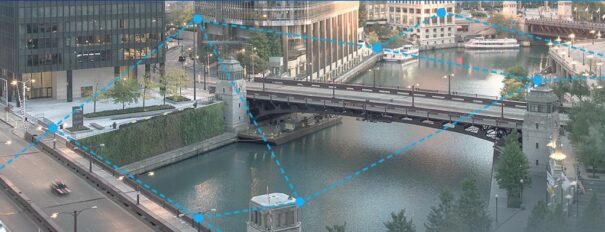Onvif presents its new D profile for access control peripherals
The new Profile D of Onvif is designed so that IP-based access control peripheral devices can communicate and integrate seamlessly through their interfaces.
Designed for interoperability Onvif, global standardization initiative for IP-based physical security products, The new one Profile D enabling the design of integrated video and access control systems, Modern and safe, IP-based.
Thanks to this profile, peripheral devices (credential readers, code and biometrics, vehicle license plate recognition cameras, video interns, Sensors, Screens, locks with readers, Etc.), that typically require specific integrations between products from different vendors in order to incorporate them into an access control management platform, they can communicate with each other without problems.
 So he explains Patrik Björling, chair of the Profile D working group at Onvif: "Users are increasingly looking to incorporate additional technologies into their access control systems, as barcode reading cameras for visitor management or video intercom applications. Profile D provides a standardized way to meet this demand for interoperability, which in turn can lead to additional opportunities for more peripheral device use cases”.
So he explains Patrik Björling, chair of the Profile D working group at Onvif: "Users are increasingly looking to incorporate additional technologies into their access control systems, as barcode reading cameras for visitor management or video intercom applications. Profile D provides a standardized way to meet this demand for interoperability, which in turn can lead to additional opportunities for more peripheral device use cases”.
In this sense, with Profile D a peripheral device, such as a wireless lock or license plate recognition camera, can pass credential IDs to a client that complies with this Onvif profile securely, as an access control unit or management software.
The client that stores the access rules, schedules and credentials can make the access decision and send a command to the peripheral device to grant or deny access, Show a message or request additional input, as a PIN code.
Having sensitive information on a separate controller improves communications and the client, as they are protected by Onvif security protocols such as TLS.
 the d profile specification allows a customer to configure a device that conforms to the required data, like from which door, access point or camera is responsible for the device, as well as scheduling a list of allowed or blocked credential IDs on a device that supports this capability.
the d profile specification allows a customer to configure a device that conforms to the required data, like from which door, access point or camera is responsible for the device, as well as scheduling a list of allowed or blocked credential IDs on a device that supports this capability.
Onvif Profile D complements profiles A and C by contemplating standardized communications in an IP-based electronic access control system.
profile d devices can also support video profiles, as in the T and M profiles to enable an integrated video and an access control system using Onvif interfaces.
For example, these devices include a video intercom that combines a reader and a lock with an audio/video intercom, or an IP camera with a relay output connected to a lock that is used by the person who is authorized to visually identify a visitor and unlock the door remotely.
You liked this article?
Subscribe to our RSS feed And you won't miss anything.



